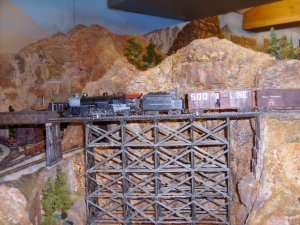It would depend on how one classifies the era. Personally, I classify them this way:
Vintage Steam Era - 1827 to 1850
Expansion Era - 1850 to 1875 (don't remember why I set the 1875 date)
Classic Steam Era - 1875 to 1920 (dates vary greatly by railroad - includes all WWI and the USRA stuff)
Super Steam Era - 1920 to 1946 (prolonged by WWII)
Transition Era - 1940 to 1960 (really begins in 1937 with EMD E1 but takes hold with the in FT 1941 and ends when the N&W retires last mainline steam.) Most class 1 and class 2 railroads were diesel by 1957. Petticoat Junction type short lines lasted a tiny bit longer into the 1960s.
First Generation Diesel Era - 1955 to 1975 (almost two time periods here depending on how one counts the introduction of the EMD 645)
Second Diesel Generation - 1972 to 1995 (begins with -2 series of electronics).
Third Generation Diesel - 1997 (begins with the SD70 w/EFI & Dash 8)
Modern Era - 2005 (begins with EPA tier-2 emissions standards. Basically the EMD 720Gxx-T2 prime mover and Gevo).
I would propose an alternative based more on technology levels:
Early Era - 1827 to 1860 : the formative years
Ante-Bellum - 1860 to 1875/1880 : standardization of gauges, train orders formative.
Turn of the Century - 1880 to 1910 : Transition to air brakes and knuckle couplers, cars jump to 36 and then 40 ft.
The Great War - 1910 to 1930 : Huge changes in car and locomotive designs, standard lettering, standard grab irons, steel underframes dominant, locomotives get trailing trucks, USRA operation, "modern rules", standardized waybills.
Depression era - 1930-1945 : Contraction and WW2
Transition Era - 1945 to 1960 Steam on its way out, dieselization, consolidation of rail systems.
Rust/Extinction Era - 1960 to 1980 : Class 1 railroads begin to die off, contraction, deferred maintenance, bankruptcies, larger mergers start.
Post Staggers era - 1980 to 2000 : Mega mergers start, railroads rebound financially, short lines proliferate, "traditional" rules replaced.
2nd Millenia era - 2000+ : Mega mergers stabilize, electronic technology proliferates, EOT, DPU, PTC, computerization widespread.


